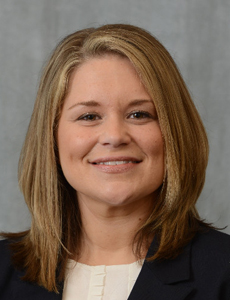Claims Adjusters Spend Too Much Time on Compliance: What Tools Might Help?

No one in the workers’ compensation industry would argue that complying with state and federal regulations isn’t important.
Claims professionals need to make sure they’re reporting information about claims to the proper state and federal agencies and they need to make sure their companies are in compliance with workers’ compensation laws.
But mailing state forms, keeping up with ever-changing laws and managing a company’s internal reporting requirements can become a problem when it begins to consume an adjuster’s time and
prevents them from helping injured workers get the care they need.

Todd Brown, director of account management, Rising Medical Solutions
“In situations where you’re having to spend excessive time doing these, whether it be due to internal or external compliance, it does generate an issue where you’re missing an opportunity to get something scheduled for the injured worker,” said Todd Brown, director of account management.
“You want to make sure that you’re assisting the injured worker to get to the appropriate doctor. You want to make sure that those appointments are timely. You want to make sure that treatment is moving forward.”
According to Rising’s 2019 Workers’ Compensation Benchmarking Study, 58% of frontline claims professionals surveyed spent more than 20% of the time on internal or external compliance activities, with 14% spending more than 40% of their time on these activities.
New technologies could help them free up some of the time spent on this administrative gloat and focus their efforts into other areas, including medical management and return-to-work.
Know How Claims Professionals Are Spending Their Time
Continuous review of claims professionals’ tasks can help companies determine whether their adjusters are spending too much time on compliance.
“Compliance can become challenging when claim professionals are spending more time on paperwork and administrative tasks than focusing on return-to-work or resolving the claim,” said Lauren Cunningham, senior vice president of casualty operations at Sedgwick.
Cunningham recommends that companies implement continuous reviews of what adjusters and other claims professionals are responsible for, in order to ensure they aren’t dedicating a burdensome amount of time to state compliance and internal administrative tasks.
“It’s really important that claim organizations conduct a continuous review of what our claim professionals are responsible for, as it is always evolving,” she said.
“Keeping a pulse on what our claim professionals are responsible for will ensure we are allowing them to work effectively and most efficiently.”
Brown seconded the need for internal reviews of claims professionals’ tasks and noted that workers’ comp professionals need to communicate the importance of compliance so that claims professionals don’t view it as a nuisance. Without communication between teams, errors can occur.
“It’s necessary for claims leaders to ensure they’re communicating the downstream impact and importance of these compliance activities so frontline staff do not simply view them as a nuisance,” Brown said.
“With state reporting, there’s so many items that go into that, so it really presents an opportunity for important data to be missed or misreported, creating issues downstream for underwriting or for your internal reporting.”
Technology Can Automate Repetitive Tasks
New tools and technologies can help reduce the amount of time that claims professionals spend on external compliance and internal administrative tasks.

Lauren Cunningham, senior vice president of casualty operations, Sedgwick
“The time of the antiquated claims system is going away,” Brown said. “There are all kinds of software out there now that is helpful and it can just take a lot of weight off of the adjuster’s shoulders.”
Some of these technologies are as simple as auto-populating forms that allow adjusters to fill out required state forms in a fraction of the time that it takes to manually fill them out.
Others, like average weekly wage calculators or self-service platforms for injured workers, help to alleviate some of the day-to-day back and forth with injured workers that adjusters have to complete.
“Technology advances each and every year which is why it’s important to explore the opportunities available to assist our claim professionals,” Cunningham said.
“Technology provides claim professionals invaluable tools to make them more efficient at their job so they can focus on what is important which is the outcome – helping injured workers return to work and providing them with optimal care.”
The internal review of claims professionals tasks can help workers’ compensation executives which tools can be implemented to free up adjuster’s time and divert it to other responsibilities.
“A continuous review of roles and responsibilities of the claim professional will allow claim organizations the opportunity to identify where technology can be leveraged,” Cunningham said.
“Exploring technology such as AI, or artificial intelligence, is essential in reducing the repetitive, time consuming tasks so claim professionals can focus on taking care of the injured worker while remaining in compliance with regulations and requirements.” &










